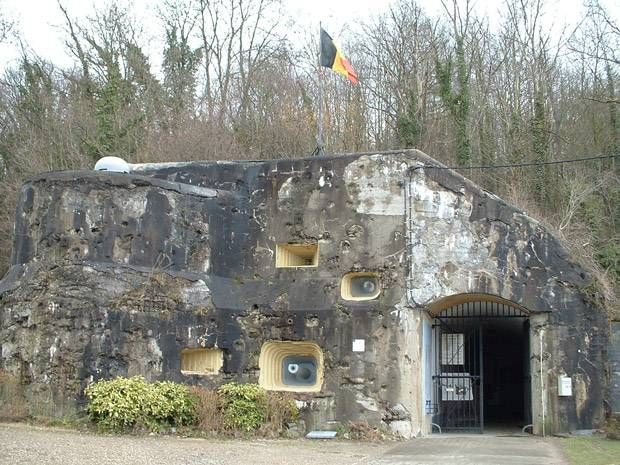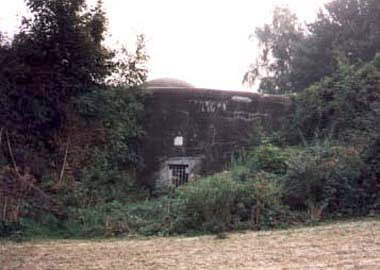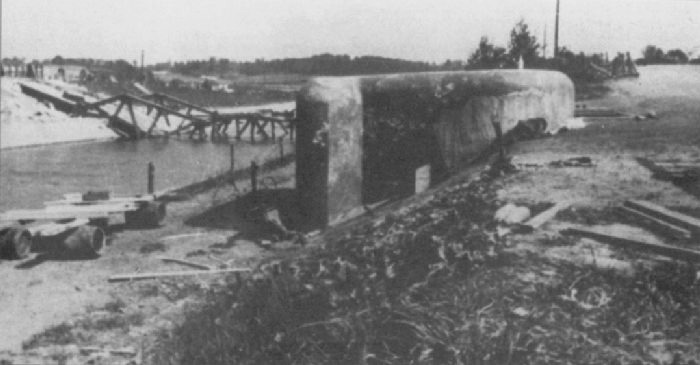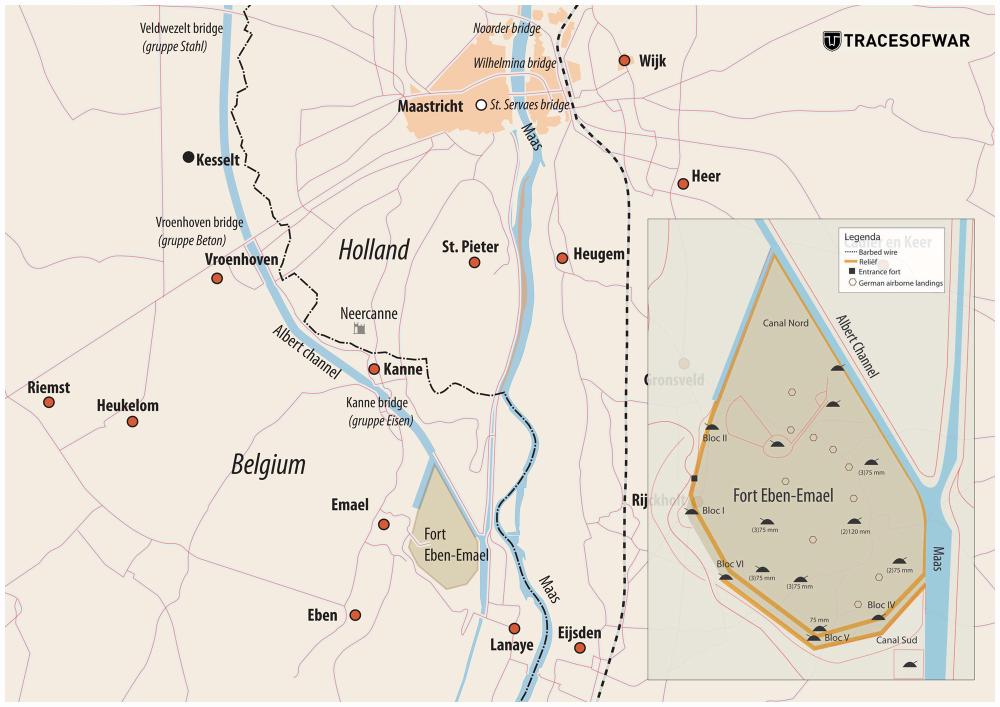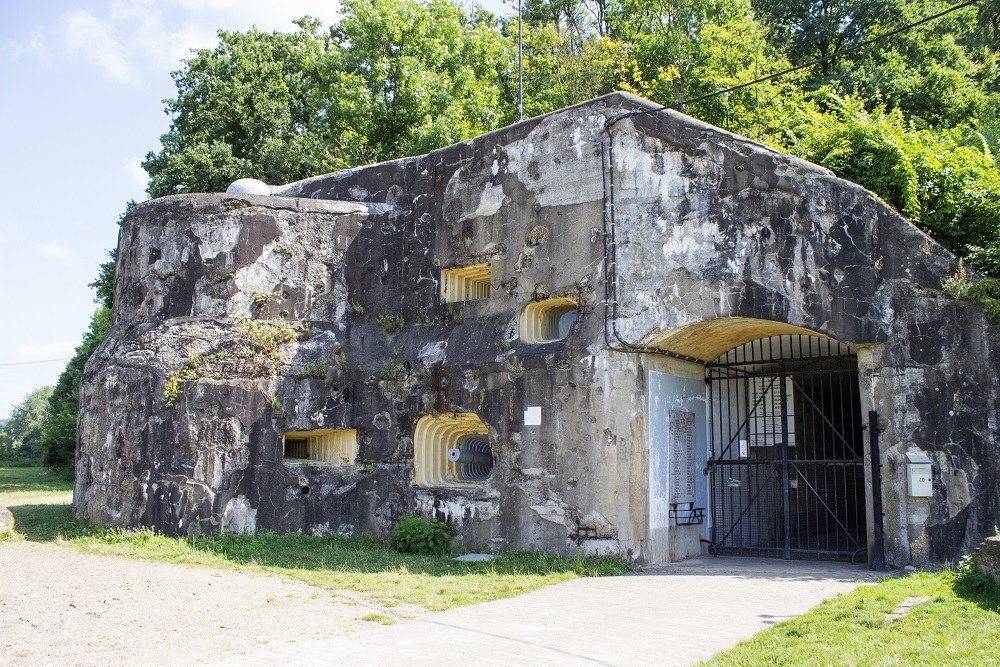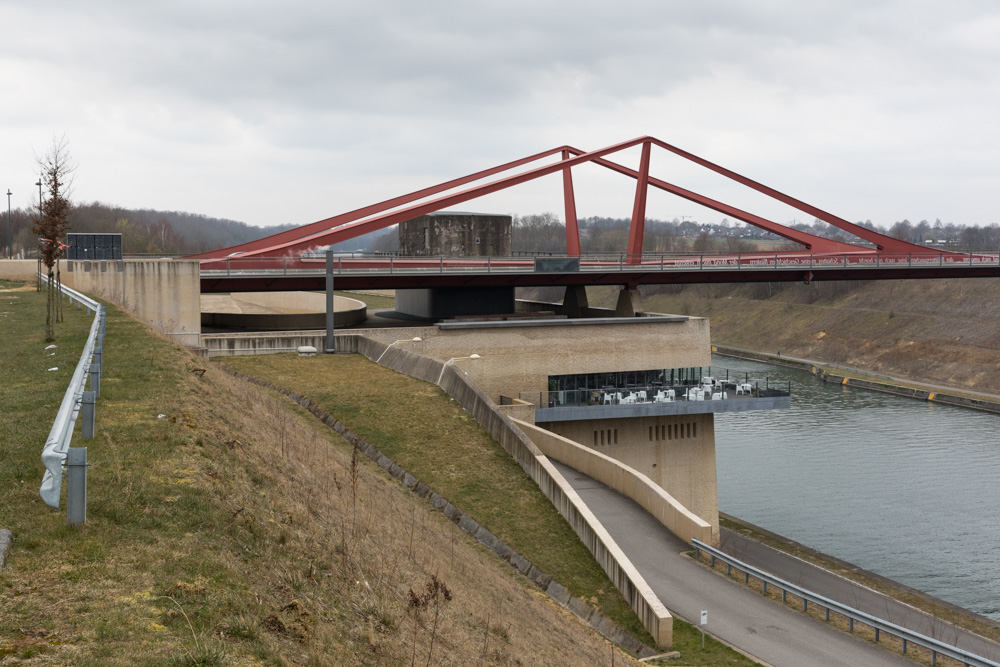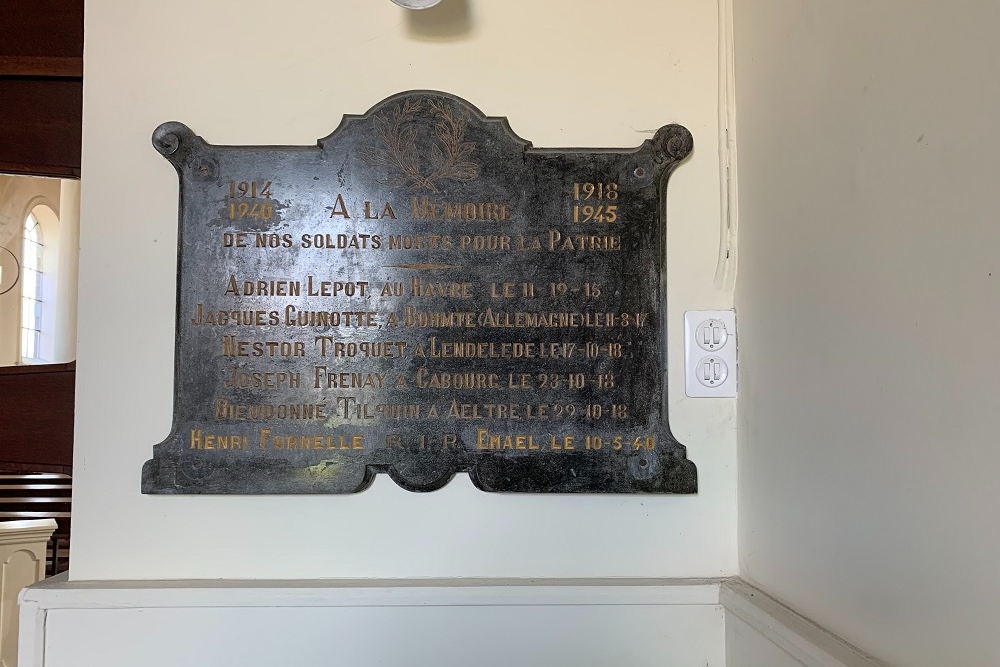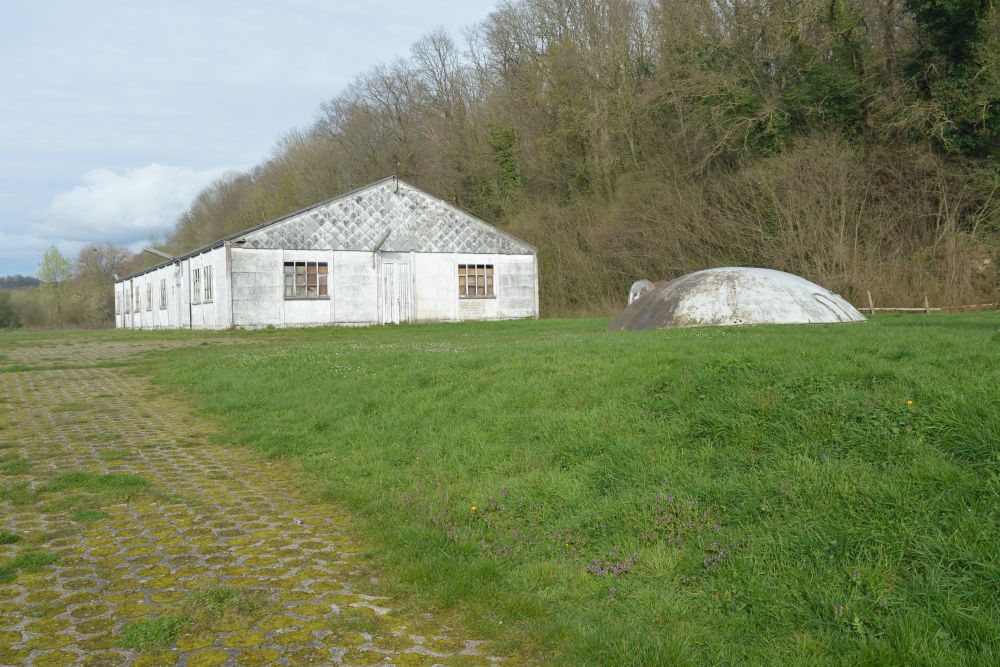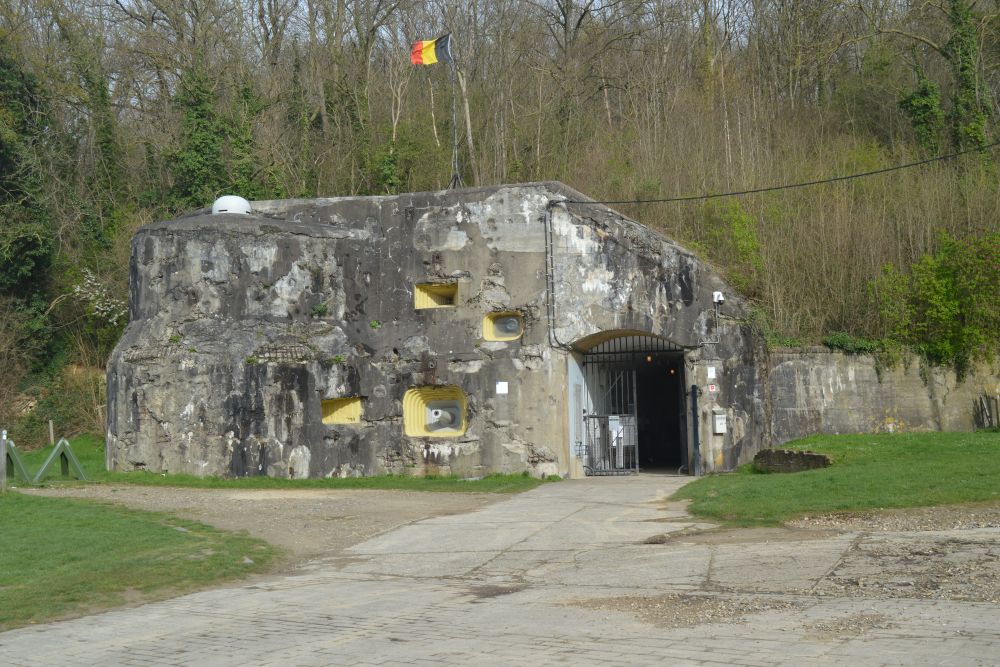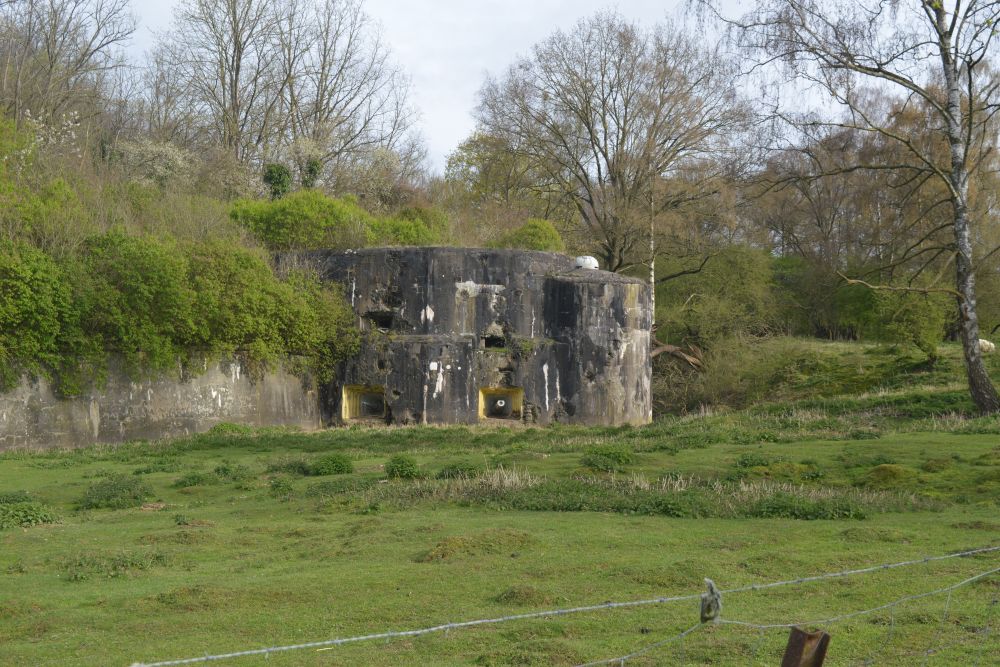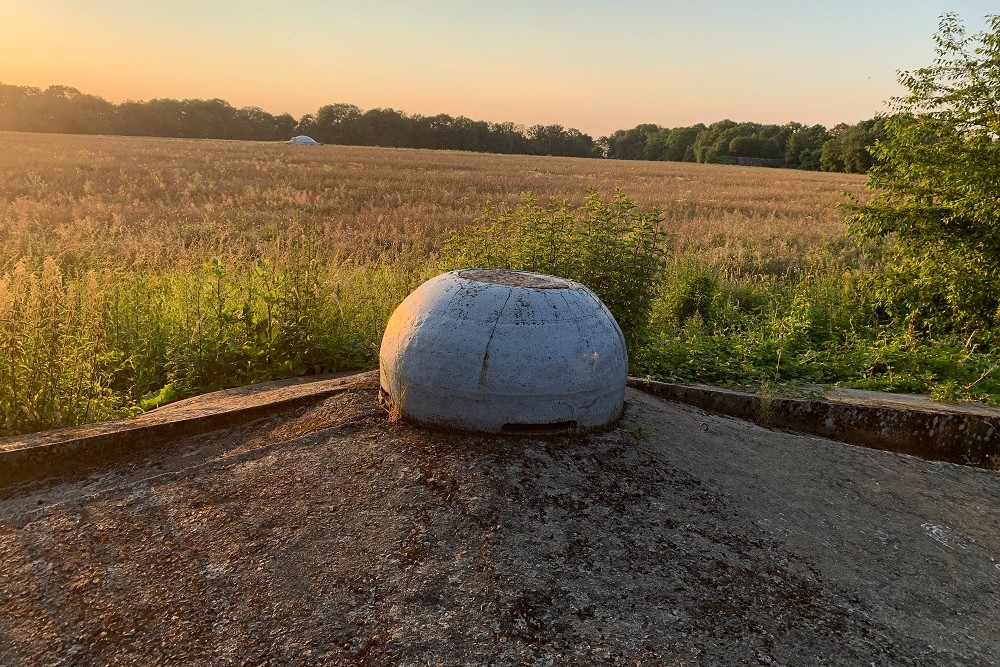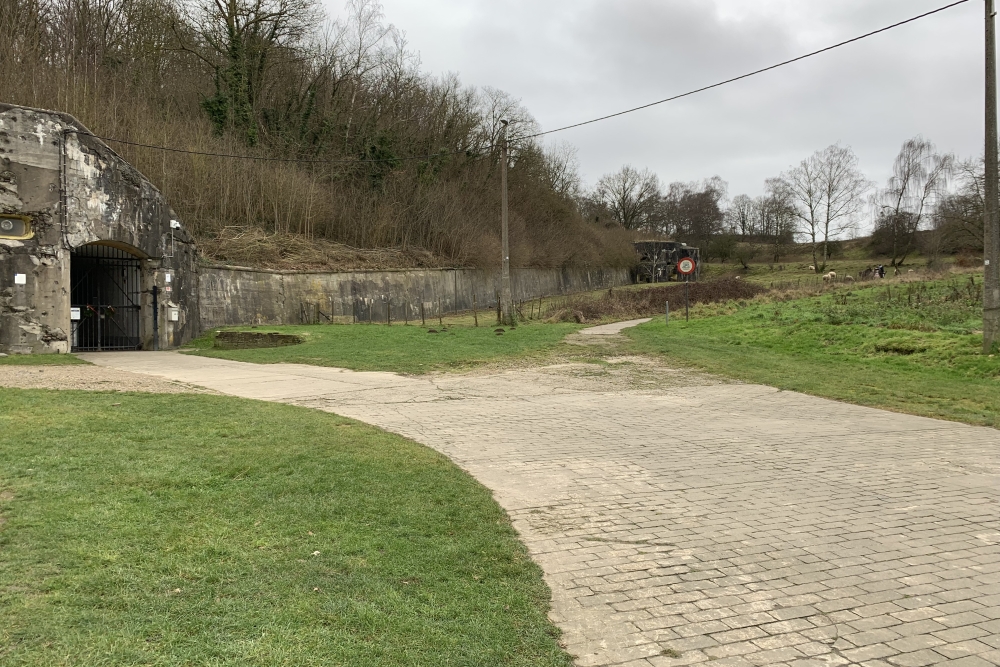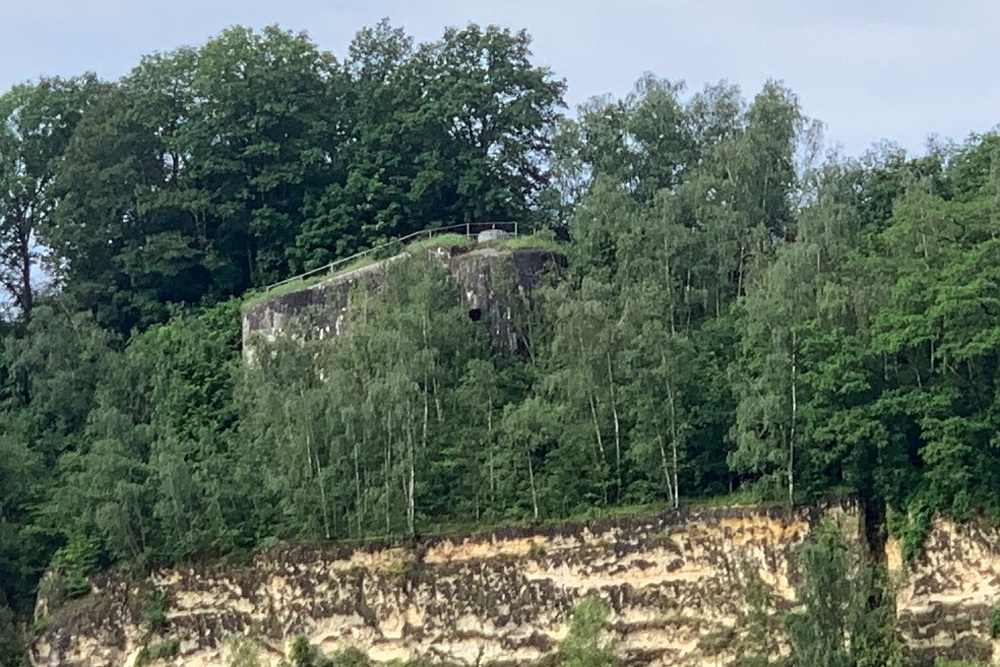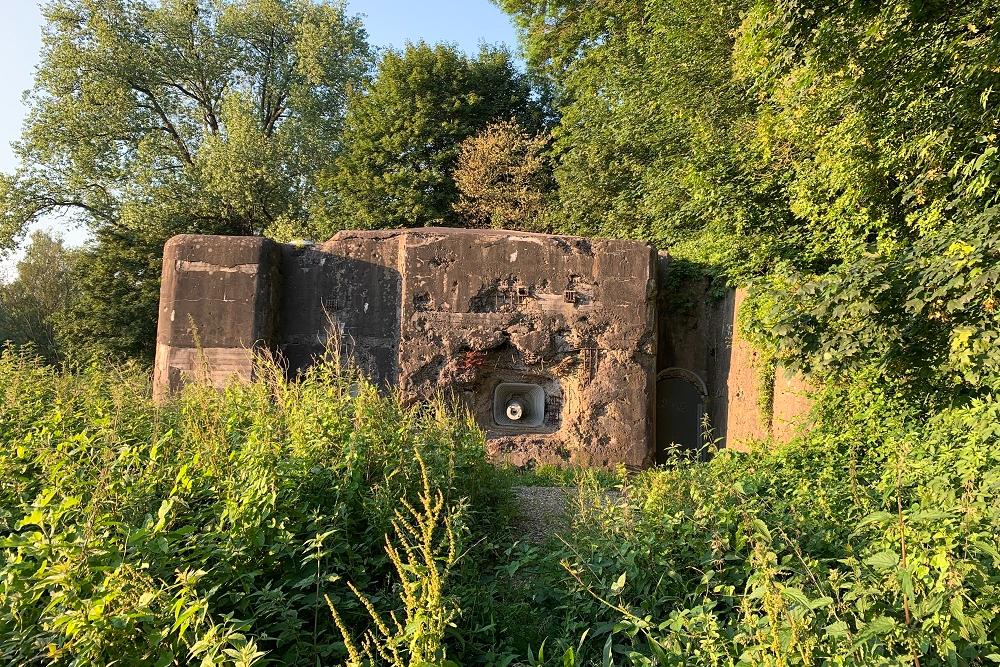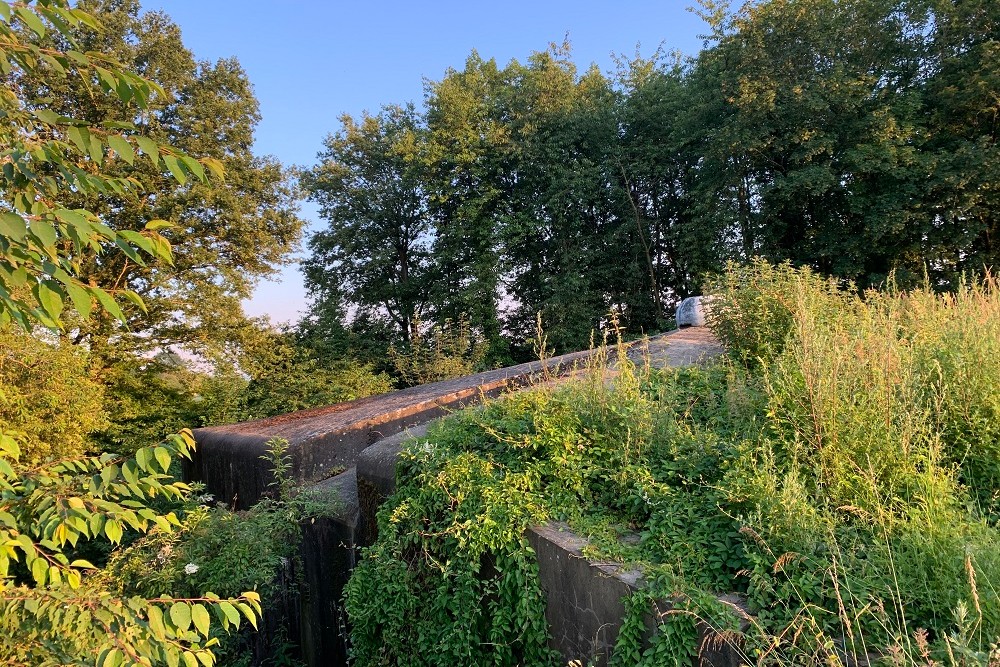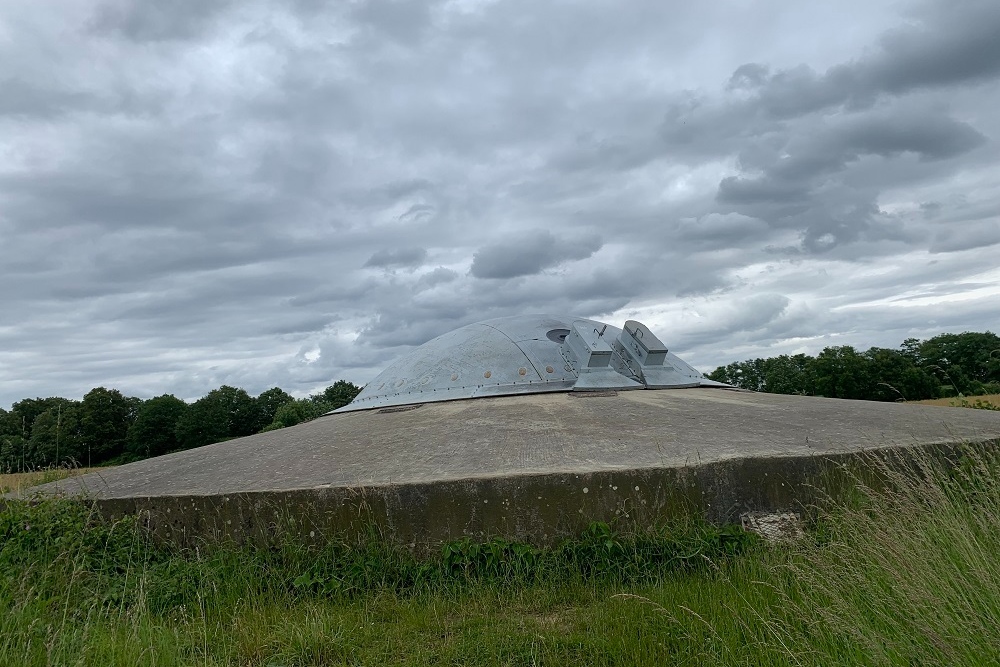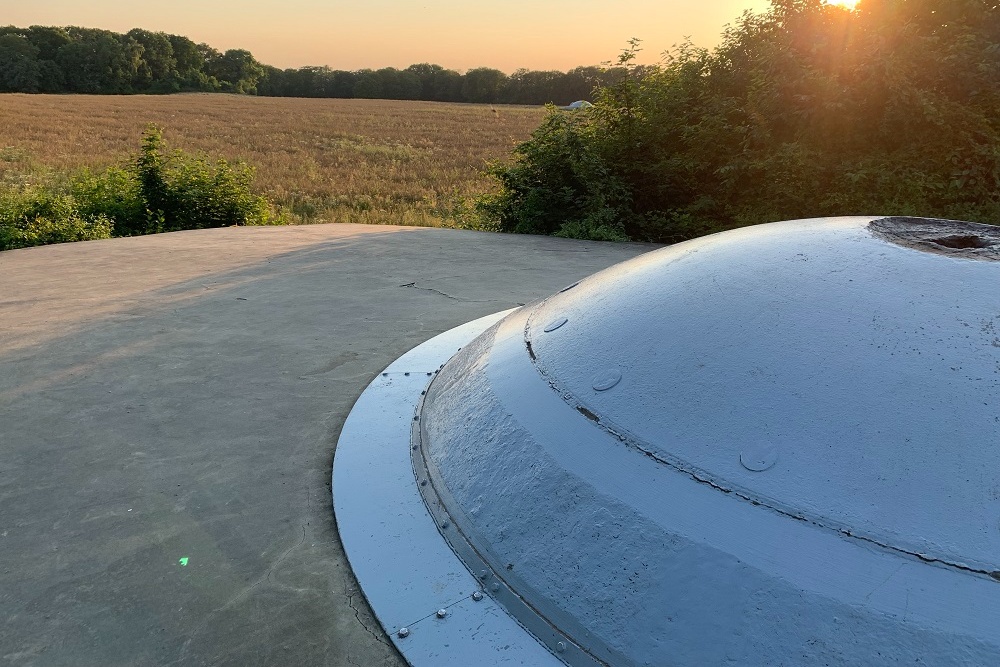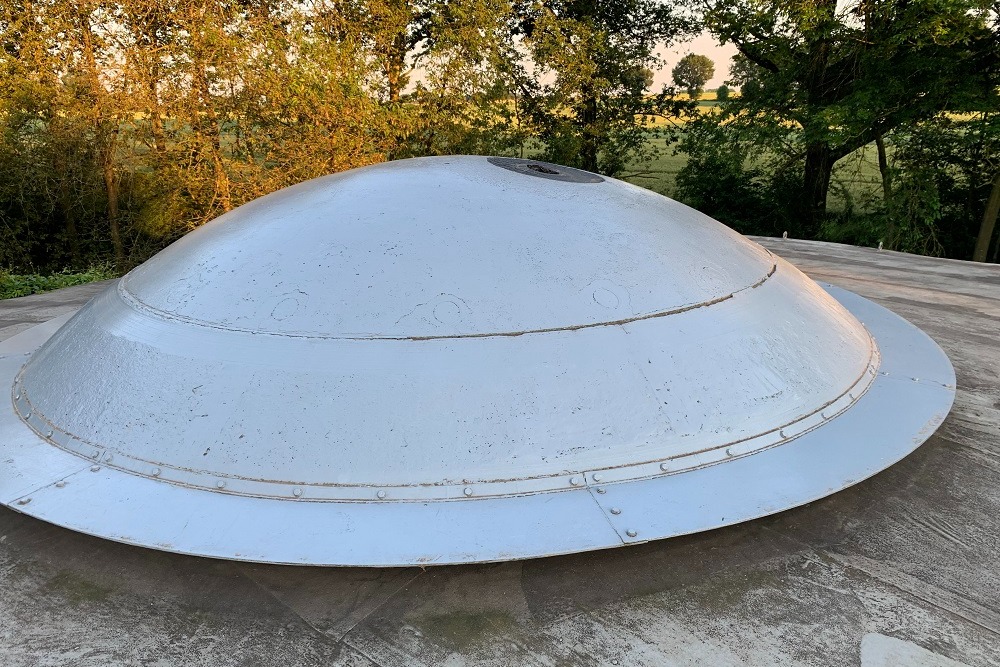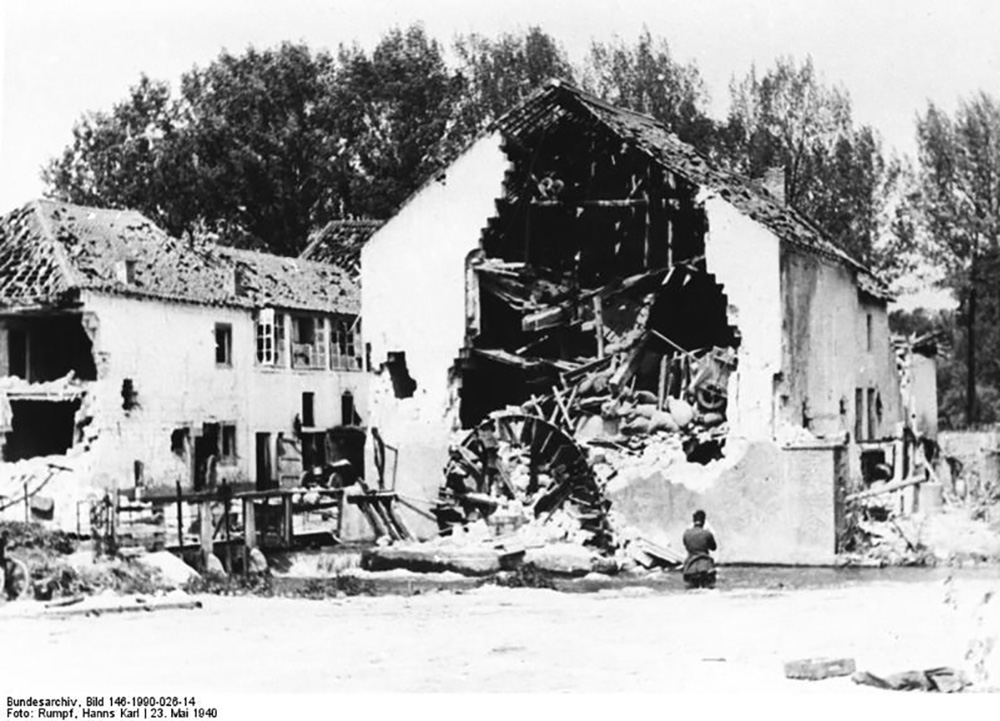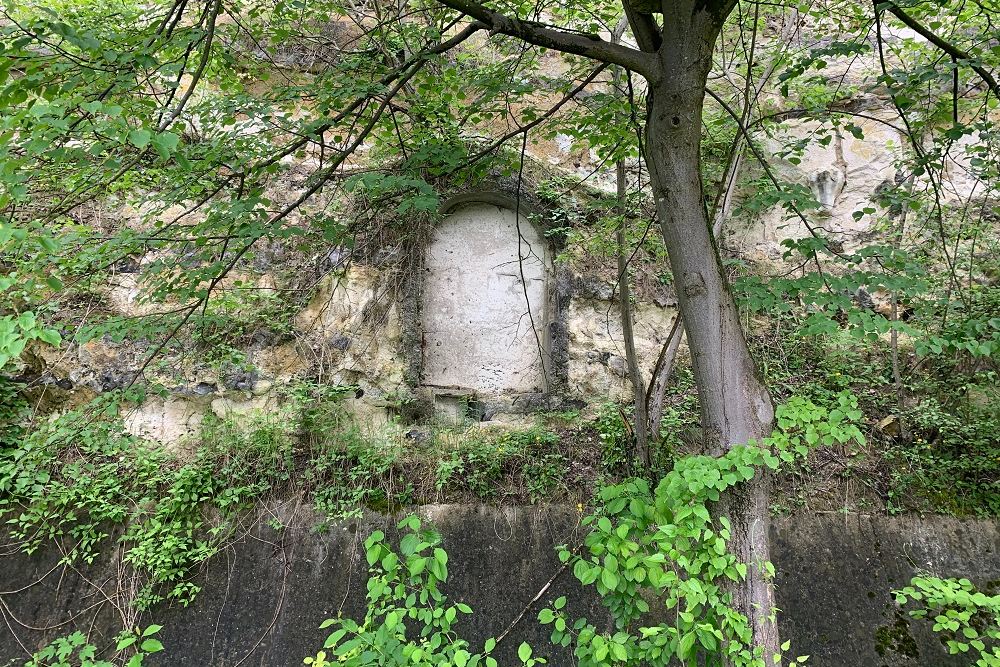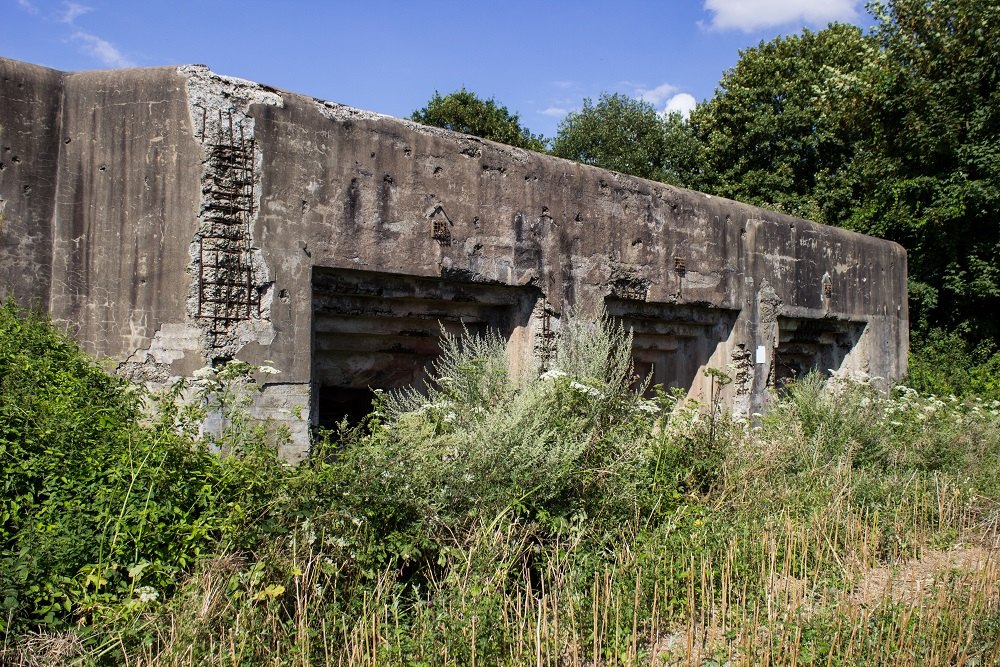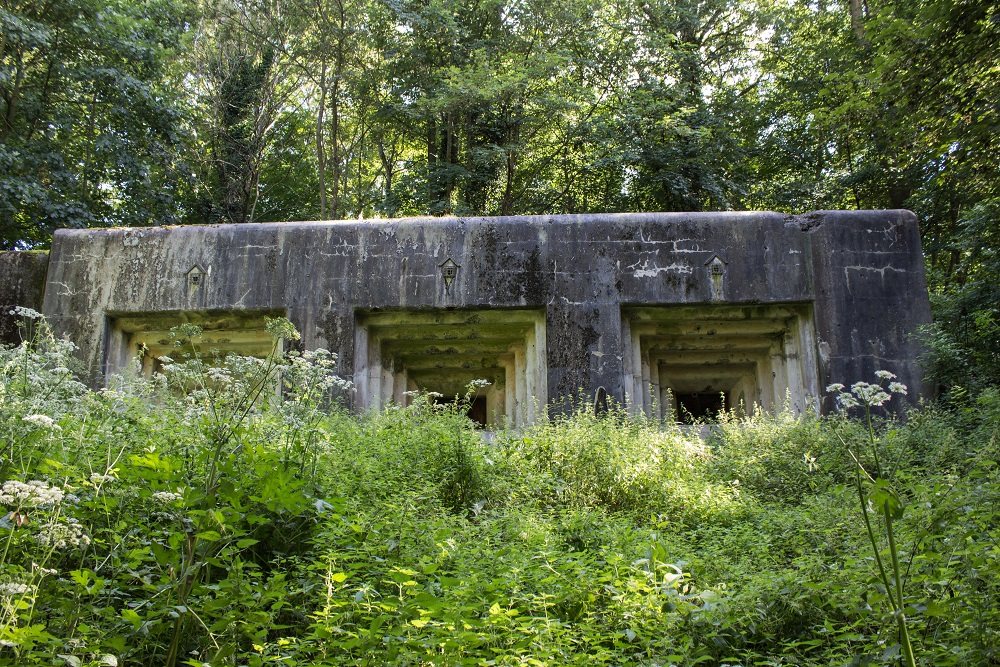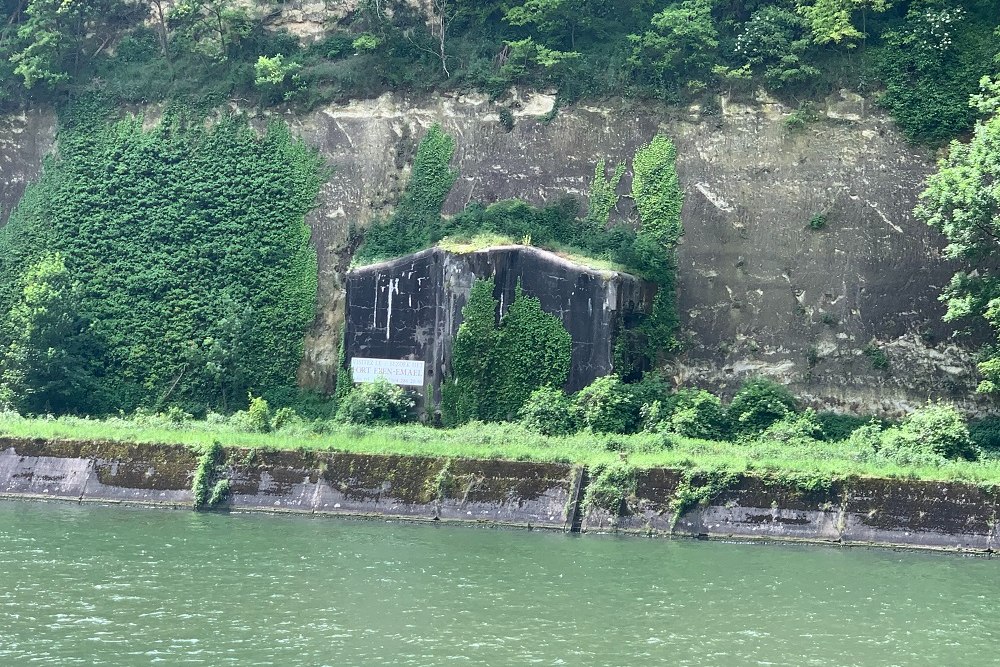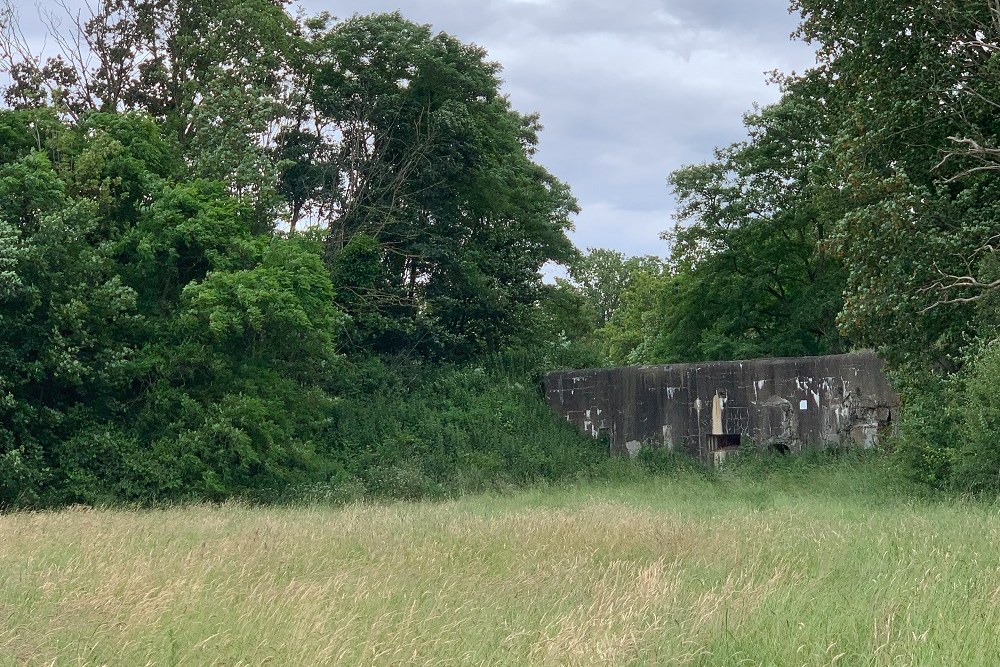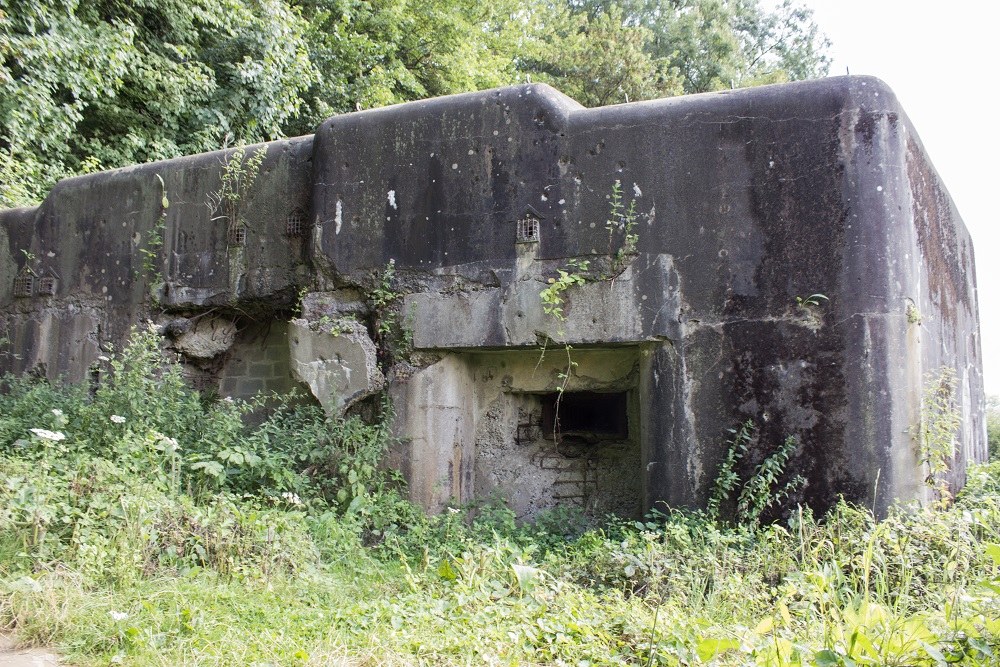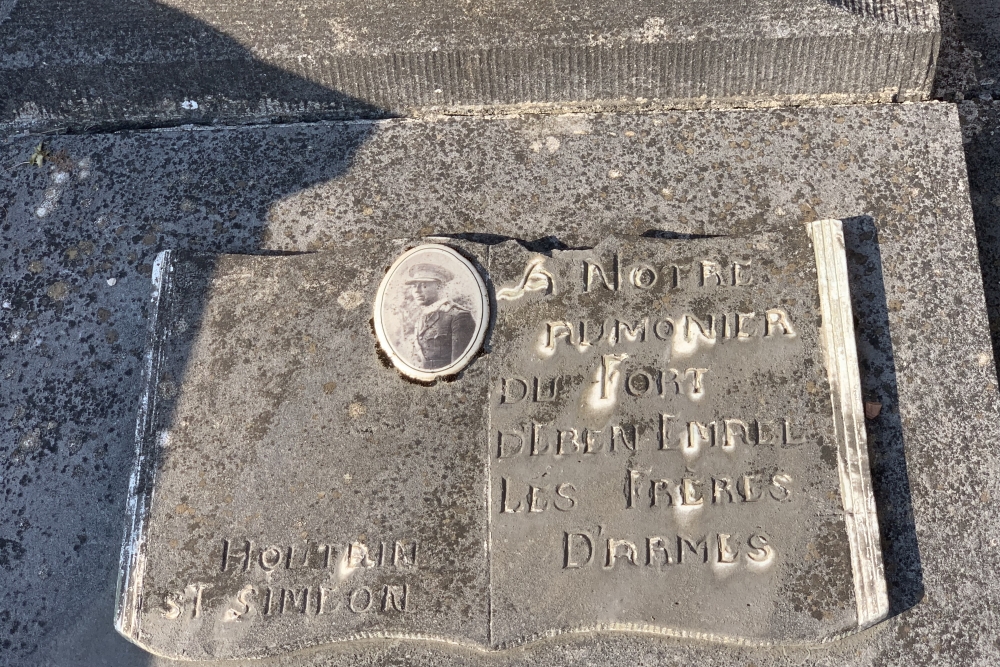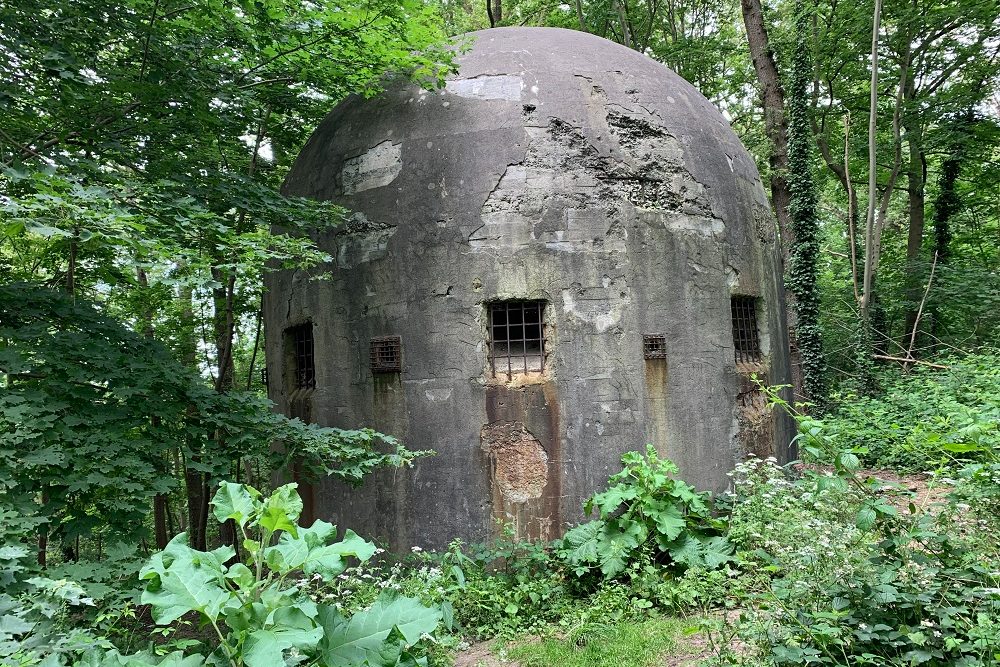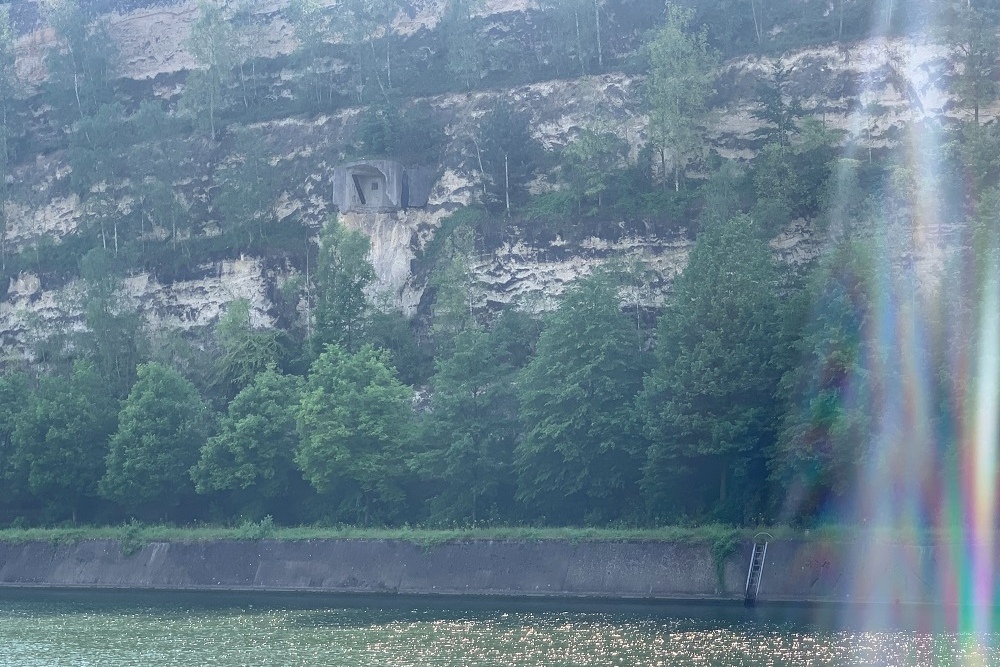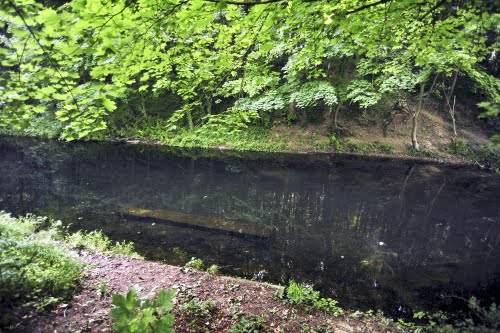Battle for Fort Eben-Emael
History
In order to understand the construction of the fort we need to look back to the 19th century and more specifically, to the year 1871. The Franco- German war had ended with Germany’s victory and unification. Belgium, a young state only in existence since 1839, feared that Germany and France would go to war again in the future. Due to the construction of French and German lines of fortification on both sides of the new border, Belgium feared that their neighbours would be tempted to fight on its territory. In order to prevent this, large concrete forts were constructed around Antwerp, Liège and Namur. The twelve forts around Liège were directed against Germany, the nine fortresses around Namur were directed against France and Antwerp was made the military headquarters.
The area between Visé and the Dutch border (Gap of Visé) was not defended, however. Due to lack of funds no fort was built there. When the Great War erupted in August, 1914 a large part of the invading German army came through this area. It took until 1932 before the construction of Fort Eben-Emael was started. At the same time the new ring of forts around Liège was started.
Description
The fort, dug out from a hill of marl, has a triangular shape and covers an area of 800 by 900 metres. On the Northeastern) it was protected by a giant wall ,40 metres high, which rose steeply from the Albert Canal, while the Southern side was secured by a giant anti-tank ditch. The third side on the North West was protected by the river Jeker and a water ditch.
The fort has two levels. Level Zero lies 45 metres below the surface, where more than 1,200 soldiers could be housed for longer periods of time without the need for replenishing supplies. Level One was 25 metres below the surface and contained 4-km long galleries that led to all combat positions. On the roof there were three rotating artillery turrets, four artillery casemates and two machine gun bunkers.
The garrison of the fort consisted of 1,200 men who were comprised of two groups of artillery men and another group of 200 military personnel, like electricians and kitchen personnel. They were led by Major Jean Jottrand. The fort was constantly manned by one group of artillery men, while the other group was stationed outside the fort in the village of Wonck which was around 7 km away.
The armament consisted of two batteries. Battery 1 had three artillery turrets with, in total, four guns of 75mmwith a range of 11 km in two retractable turrets and two guns of 120mm with a range of 17.5 km in a non- retractable turret. All three turrets could rotate 360 degrees. These were complemented by four artillery casemates . Each casemate had three 75mm guns. All guns could traverse a total of 70 degrees. Two faced North and were called Maastricht 1 and 2 and two faced South and were called Visé 1 and 2. Battery 2 was equipped with defensive bunkers. Each of these bunkers had 60mm guns, machine guns and search lights. To complement this, the fort also had some phoney turrets- without armament to mislead the enemy.
At first glance this would seem to be a strong and adequate defence. The weak spot however, was that almost no air defensive measures had been taken. Only on the Southern side a small battery of machine guns had been placed exactly between the three major turrets of Battery 1. This would turn out to be a fatal mistake. On top of this, no mines were laid on the flat surface of the fort nor had any other obstacles like poles -or barbed wire- been placed. A direct defence for the turrets, bunkers and casemates like a deep diamond moat was not deemed necessary in the mind of the Belgian planners. No attacker would get there in the first place.
The Albert Canal was itself a defensive line and was for a stretch of 19km defended by the 7th Infantry Division which consisted of 16,600 men under command of General Eugène Van Trooyen. In normal circumstances the frontage for an infantry division would be 6 km. This division was part of 1st Army Corps which was commanded by General Alexis Vander Veken. Three regiments were deployed along the canal: The 2nd Carabiniers in the North, the 18th Line Regiment in the centre and the 2nd Grenadiers in the South, within the border of Fort Eben-Emael.
The German plans
Eben-Emael was of tantamount strategic importance for the Germans. They had to conquer the bridges over the Albert Canal as soon as possible in order for them to create bridge heads to speed up the advance of their armoured divisions. In order to succeed in this mission, the Germans had prepared themselves thoroughly. The paratroopers who would participate in this action, had trained for six months in a row, in deepest secrecy in remote parts of Germany. In Altwater, they were able to train with their new shaped charges on modern Czech fortifications. In Hildesheim they had found terrain which resembled the Eben-Emael terrain. The paratroopers from Sturmabteilung Koch -(assault battalion)-from the 7th Fliegerdivision who were supposed to do the job, lived in total isolation. Contact with military personnel was strictly forbidden. They themselves were unaware of what their target would be.
The capture of the fort wouldn’t be a routine task. Therefore new methods and weapons were applied. Surprise was the most important element. The main defensive posts were to be taken quickly and/ or destroyed before the Belgians could blow up the bridges over the Albert Canal. Therefore the air assault troops would be transported by glider planes as close to their targets as possible. Furthermore, the Germans would use a new weapon: The shaped or hollow charge. With this kind of explosives the bulk of the explosive force could be concentrated on one point. Depending on the amount of explosive used, armour steel with a thickness between 18 and 30 cm could be punctured with devastating effect behind the armour.
At the same time as the assault on the fort the bridges at Veldwezelt, Vroenhoven and Kanne needed to be taken. To ensure the success of this operation, forces from the 6th Army - (from Army Group B) under command of General Von Reichenau were deployed as well as the Air Assault Unit under Captain Koch. The units concerned were the 3rd and 4th Armoured Divisions, the 20th Motorized Division, the 151st Infantry Regiment and the .51st Pionier or combat engineers battalion. Their role in taking Eben-Emael was limited. Their main task was protecting and expanding the bridge- heads along the Albert Canal.
The group of Fallschirmjäger or paratroopers were split up in various Sturmgruppen –teams, each with a different target. Each target received a code name. The group Stahl -(steel),which consisted of ten gliders with one officer and 91 paratroopers had to conquer the bridge at Veldwezelt. Beton- (concrete) consisted of 11 gliders with five officers and 129 troops among which was Captain Koch who was tasked with capturing the bridge at Vroenhoven. The bridge at Kanne received the code name Eisen-(iron) and was to be taken by two officers and 88 troops in ten gliders. Eben-Emael finally received the code name Granit-(granite). For the fort, 11 gliders with two officers and 85 paratroopers were reserved. The code names alluded to the materials that the targets were comprised of. Altogether 350 men were deployed, divided over 42 glider planes. For three bridges and the strongest fort in the world this number may seem inadequate but this is explained by the small number of available glider planes and the charges that had to be transported. Granit alone needed 2,5 tons of explosives to detonate its turrets and the casemates on the surface of the fort.
The assault.
On May 9th 1940 the German air assault group prepared for battle. At night the gliders, towed by Junkers-52 transport planes took off from the air fields Ostheim and Butzweilerhof near Cologne. The towing lines of two gliders, one of which was carrying Senior Lieutenant Witzig (in charge of the attack on Eben-Emaël), broke. They had to restart the action and arrived hours late. (By the way this is an excellent example of the German Auftragstaktik or Mission Type Tactics). The next in command took over and accomplished the mission. In the vicinity of Aachen the gliders were delinked and flew on at a speed of 120-140 kilometres per hour. The 40 gliders landed at 04:25-h, just five minutes before the main German forces would cross the Dutch and Belgian borders.
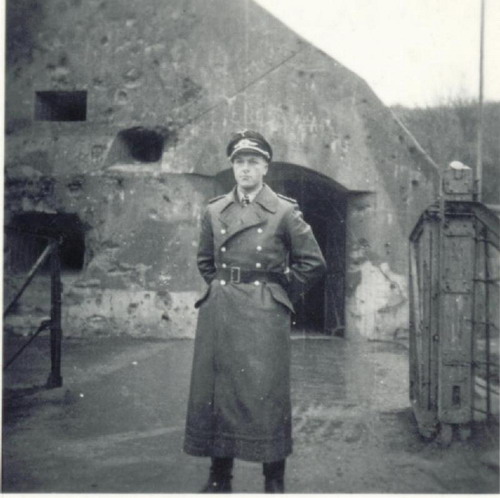
Senior Lieutenant Witzig, the commander in chief, in front of an entrance of the fortress after the attack. Source: Gerd van der Auwera
The unexpected arrival of silent gliders from the dark sky totally surprised the garrison of the fort. Before the Belgians could realize what had happened, the fighting was in full progress. The Germans ran from their gliders to attack the cupolas and casemates - from behind. Their first task was to neutralize the few anti-aircraft machine guns, the observation cloches and the machine gun bunkers. Then the artillery pointed towards Maastricht had to be taken out. Commanding officer Jottrand ordered the immediate destruction of the bridges at Kanne, Ternaaien en Klein-Ternaaien. Next he ordered "Fire from all guns!" Most of the cupolas and casemates remained silent however because they had already been neutralized. Less than 15 minutes after the start of the assault the superstructure of this impenetrable fort was for the most part in German hands. Hand grenades were thrown into bunkers and cupolas. Flamethrowers were used to drive the Belgian soldiers out of the casemates. In the corridors there was suffocating smoke, while the chaos was made worse by noise from the detonations and failing electricity. In the meantime the bridges at Veldwezelt and Vroenhoven had been conquered by the German paratroopers. Here too, the Belgian defenders were completely overwhelmed by the assault. The bridge at Kanne was blown up by the defence.
Many soldiers fled to the subterranean level 0 of the fort in utter despair. It was commanding captain Van der Auwera who ordered them back to their combat posts. The Belgian resistance better organised itself and became increasingly stronger. A real counter attack however did not take place. The gunners were inadequately equipped and not trained for an infantry role. Besides, the Luftwaffe came by regularly in order to bomb any attacks that would develop. Because the conquered posts were marked with red swastika flags the Stukas could bomb accurately.
In the early afternoon of May,10th 1940, Eben-Emael was shelled from the forts of Pontisse-(1000 x 105mm) and Barchon-(40 x 150mm) in an attempt to drive the German assailants from the superstructure. They could find shelter, however, in the captured bunkers. The artillery used was not heavy enough to do real damage. The only solution was to conquer the bunkers from outside which demanded a coordinated assault by infantry and artillery. This was all but impossible because practically all lines of communication were now destroyed.
Around 09:30h, a platoon from the 2nd Grenadiers under lieutenant Wagemans reached the fort. An hour later they executed a counter attack which failed due to bombing by Stukas. In the afternoon commanding captain Van der Auwera tried also. Once again the attack was broken up by dive bombers. Around 14:00 hours the detachment of Wonck arrived. On their way to the fort they had suffered heavily under bombing. At around 16:00-h they joined the Grenadiers and counter attacked the Germans who were driven to the Northern part of the fort. The night came to the rescue of the Germans. In any case, Wagemans had to retire his grenadiers at 20:00-h because of a lack of ammunition.
In the night of May 10th-11th 1940 the Germans succeeded in detonating heavy explosives in the Northern shafts of the fort. They did this to prevent any possible counter attacks from within the fort itself. The explosion was felt in the entire fort and caused very severe damage. Many soldiers were terribly burnt. In the early morning of May 11th 1940 the Fallschirmjäger were reinforced by the arrival of the 51th Pionierbataillon, 26 hours later than planned. They were delayed at Maastricht where the Dutch had demolished the two bridges and the railroad bridge over the Meuse. After this they had encountered a fair amount of resistance while trying to cross the Albert Canal. In any case, they swiftly joined the other Germans and penetrated the underground corridors with their flamethrowers and satchel charges with which they drove the Belgian defenders out of their last hiding places.
As a consequence of these explosions and reinforced by the noise of bombing and artillery it seemed to the desperate defenders as if the fortress was about to explode at any time . The hunted down and demoralized Belgian defenders refused to obey orders and tried to escape from the chaos. The defence was rapidly collapsing. Commanding Officer Jottrand realised this and tried to get in contact with the CO of the Belgian III Corps to report the bad news. Before surrendering a remaining turret and other heavy weaponry were destroyed by the Belgians.
At 10:15 h Captain Vamecq accompanied by a trumpeter and a soldier with a white flag went to Bloc I to surrender the fort. Due to bombing and shelling at the entrance he didn’t succeed in establishing contact with the enemy. A second attempt was more successful. After a few trumpet signals a cease fire came into effect. Eben-Emael was unconditionally surrendered to Captain Haubold from the 151st Infantry Regiment and not to the Fallschirmjäger-engineers who bore the brunt of the battle.
Conclusion
The rapid fall of Eben-Emael was an overwhelming tactical success (as was indeed the whole of Fall Gelb or Case Yellow). Without the use of revolutionary methods and weapons coupled with speed and surprise this would not have been possible. If the Germans had attacked Eben-Emael only with ground forces they would have suffered heavy casualties beyond any doubt. The smaller and weaker fort of Aubin-Neufchâteau which was attacked by infantry, artillery and dive bombers stood up against the German onslaught until May 21st ,1940. Eben-Emael had not been prepared for an airborne assault however. The psychological impact of this spectacular victory was also important. German propaganda had spoken about " new methods of attack" without mentioning the shaped charges. On the Allied side, this gave ample room for rumours and speculations about German secret weapons. The French with their impregnable Maginot Line really had something to be nervous about. If the strongest and most modern fort in the world could be silenced in a few hours what would be the fate of the French fortifications? However this line was never attacked in full force except for some forts. The real surprise was the armoured thrust through the impassable Ardennes by seven German Panzerdivisionen and the subsequent breaking of the front at Sedan. In any case, after the demise of Eben-Emael and the Maginot Line such fortifications were considered to be obsolete. Still they would play a role at the Stalin Line and at Sebastopol. The Germans ironically invested huge amounts of labour, money and material in their Atlantikwall later in the war. War was no longer a static affair like in 1914 and 1916 when forts helped to save France. Speed and mobility would be the decisive factors in warfare from now on together with depth and synchronicity. Combination- of- arms and Blitzkrieg.
This fort which was considered impenetrable fell in less than two days. It was conquered by a modest force. On the Belgian side there were 24 dead and 64 wounded. The Germans lost scarcely six dead and 18 wounded. Senior Lieutenant Witzig and Captain Koch earned the Knight’s Cross of the Iron Cross for this miraculous feat, Germany’s highest decoration. Witzig was also promoted to Captain.
During the occupation, the Germans used the fort as barracks and as a repair shop for fixing machines. On September 11th,1944 the Allies took the fort without a single shot, a sign of its faded glory.
Definitielijst
- Blitzkrieg
- The meaning of this word is “Lightning War”. Short and fast campaign. As opposed to a trench war the Blitzkrieg is very quick and agile. Air force and ground forces work closely together. First used against the Germans (September 1939 in Poland.
- casemate
- Enclosed bombproof area, made out of stone or concrete and used to install guns and/or other firearms. Casemates contain various loopholes to enable gunners to use their weapons. They are part of a larger defense system (roundel, bastion, fortress and others) or are an indiidual defensive position in a defense line. In the Netherlands the word (as kazemat) was standard use for a bunker or pillbox.
- Fallschirmjäger
- German paratroopers. Part of the Luftwaffe.
- Infantry
- Foot soldiers of a given army.
- Iron Cross
- English translation of the German decoration Eisernes Kreuz.
- Luftwaffe
- German air force.
- machine gun
- Machine gun, an automatic heavy quick firearm.
- Maginot Line
- French defence line along the French-German border.
- paratroopers
- Airborne Division. Military specialized in parachute landings.
- propaganda
- Often misleading information used to gain support among supporters or to gain support. Often used to accomplish ideas and political goals.
- Regiment
- Part of a division. A division divided into a number of regiments. In the army traditionally the name of the major organised unit of one type of weapon.
- resistance
- Resistance against the enemy. Often also with armed resources.
- shelling
- Indication for shooting targets with grenades. Both from artillery and armoured artillery.
- Sturmabteilung
- Storm detachment. Semi-military section of the NSDAP. Founded in 1922 to secure meetings and leaders of the NSDAP. Their increasing power was stopped during “The night of the long knives”, 29 and 30 June 1934.
- swastika
- Equilateral cross, symbol of Nazi-Germany.
Information
- Article by:
- Gerd Van der Auwera
- Translated by:
- Peter ter Haar
- Published on:
- 19-04-2013
- Last edit on:
- 30-09-2024
- Feedback?
- Send it!
